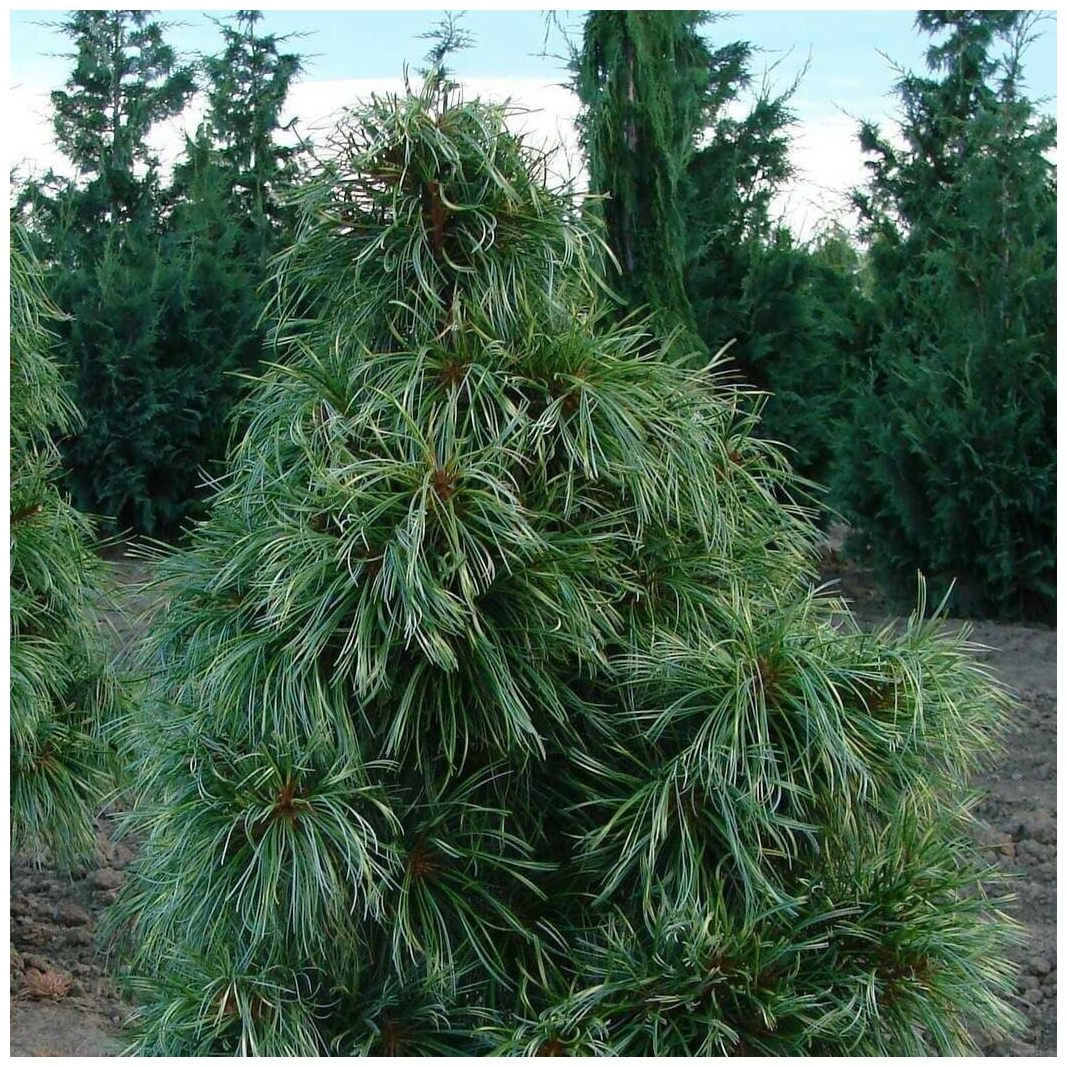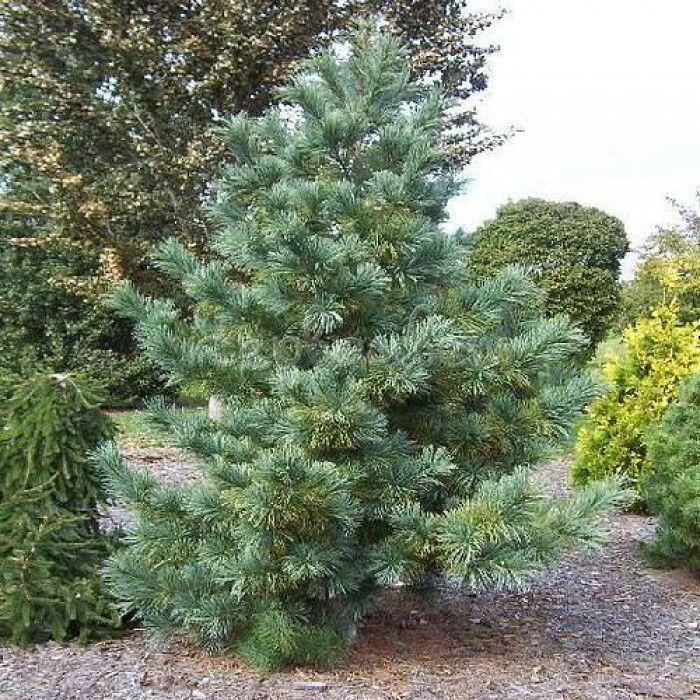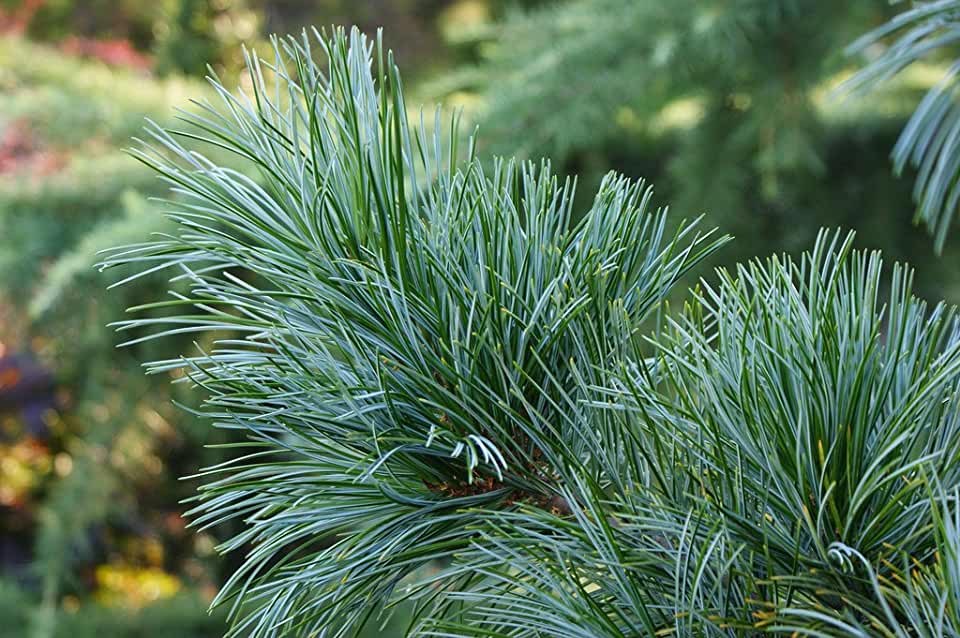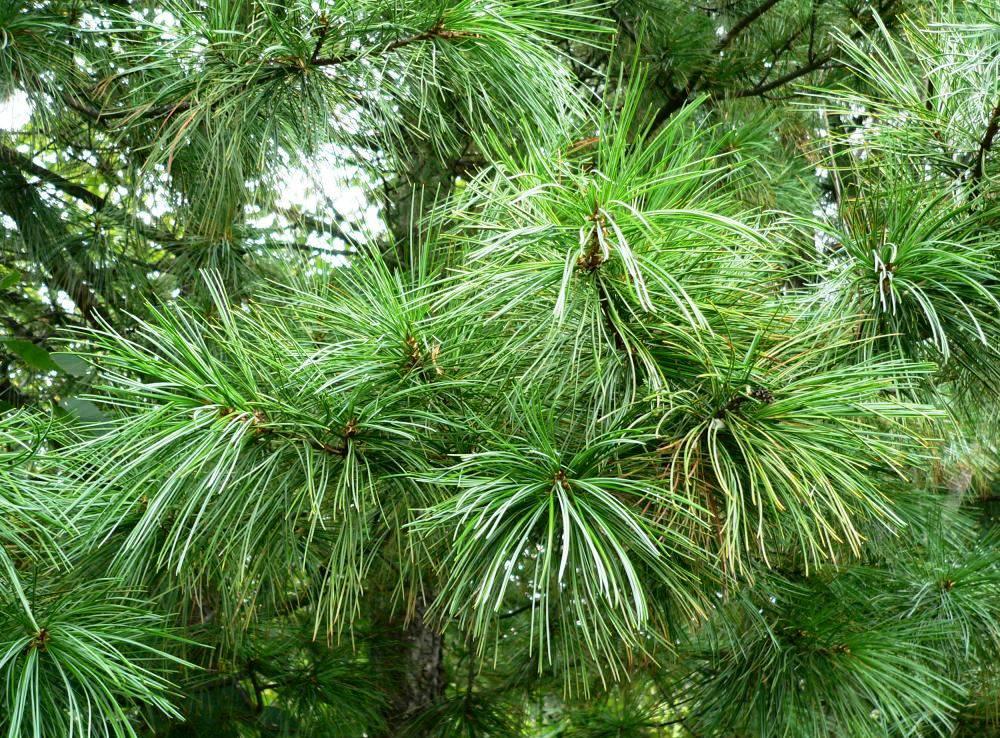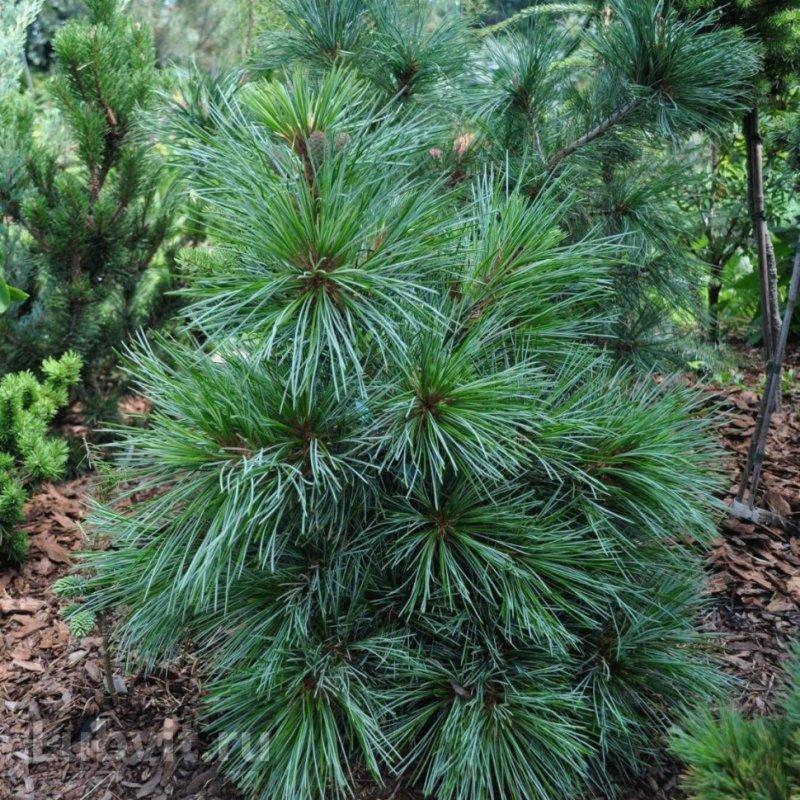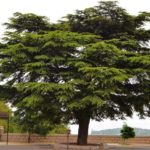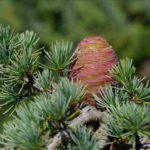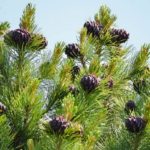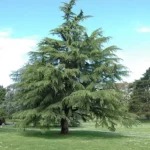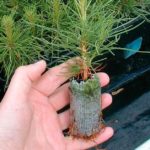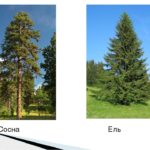Korean cedar is considered one of the most valuable wood species in the coniferous forests of the Far East. Currently, this crop is grown in nature reserves and in summer cottages. It decorates the natural landscape and helps create a unique forest atmosphere. In order for the plant to adapt well and develop fully, it is important to carry out planting work correctly and provide it with quality care.
What kind of tree is this
In fact, this plant does not belong to the Cedar genus.In botany it is called cedar or Korean pine. Thus, scientists classify this culture specifically as a member of the Pine genus.
In a favorable environment, the tree can reach a height of 45-50 meters. Moreover, its diameter is 2 meters. The bark of the conifer is quite thin and rough. It has a gray-brown color with reddish notes. The tree has a well-developed dense crown, which has a conical shape. As the culture develops, it becomes more light-loving. Young trees are covered with light red hairs.
Korean cedar grows in moderately cold climates. The root system of the tree goes 1 meter deep and wide. Therefore, young plants are highly resistant to wind. The culture is characterized by rather long needles measuring 7-20 centimeters. It has a bluish-green tint. The needles form small bunches of 5 pieces each. The needles are replaced at intervals of 4-6 years.
Distribution area
In Russia, cedar pine is mainly distributed in the Amur region, Primorye and the Far East. This culture is also found on the shores of the Tatar Strait and the Sea of Japan. The tree grows in small quantities in the Ussuri and Amur valleys. Ephedra is also found on the Japanese island of Honshu, Korea and the northeastern part of China.
Tree yield
According to the botanical description, Korean cedar grown from seeds begins to bear fruit 25-27 years after the first shoots appear. Under natural conditions, only trees over 60 years old produce a harvest.
The fruits of the plant ripen 1 year after pollination. This happens at the end of October. From 1 crop you can get up to 500 cones, or 25-28 kilograms of nuts. There are approximately 130-150 seeds in 1 cone. It is important to consider that crop yield parameters are influenced by nearby plants and the location of the cedar.
Harvesting is required at intervals of 3-4 years. Korean cedar produces maximum nuts at 100-170 years. By 300-350 years, the plant’s productivity decreases.
Popular varieties
Cedar pine looks quite attractive. However, its large size does not allow it to be grown in a small area. Therefore, through the efforts of breeders, many varieties have been developed that are distinguished by their compact size. Also, new varieties are characterized by an unusually shaped crown or bright needles.
Cedar Soulange
This plant is a variety of Korean cedar. It reaches a height of 40 meters and is distinguished by long bluish-green needles. The plant begins to bear fruit at 15-20 years of age. This cedar is characterized by a rather dense openwork crown.
The plant can withstand air pollution well. Thanks to this, it can be planted in city parks. An important advantage of the crop is the early onset of fruiting. The plant produces a harvest 10 years earlier than ordinary Korean cedar.
Silveray Pine
This ornamental crop is distinguished by its pyramidal crown. It is characterized by long and slightly curved silver-blue needles. By the age of 10 years, the tree reaches a height of 2.5 meters. Moreover, its diameter is 1.2 meters.Over the course of a year, the crop increases by 25 centimeters.
This variety is characterized by high frost resistance parameters, demands on soil fertility and the absence of moisture stagnation near the root system. It is worth considering that until 1978 this crop was sold under the name Glauka. However, the name was subsequently changed. This was done in order to separate the plant from another variety, which is less resistant to frost.
Cedar Morris Blue
This variety was obtained in Pennsylvania. It is characterized by high resistance to frost. The culture forms a dense conical crown. It is characterized by silver-blue needles, which form bunches of 5 pieces. During the season, the cedar pine grows by 15-20 centimeters. An adult plant reaches a height of 3.5 meters. Moreover, the width of its crown is 1.8 meters.
This crop is characterized by gray bark, which looks especially attractive in winter. Morris Blue cedar has difficulty growing in the city. In addition, it requires a sufficient amount of sun and absence of moisture in the root area. At the same time, the crop can withstand dry weather well. The lifespan of the plant reaches 120 years.
Russian varieties
In Russia, breeding work on the breeding of Korean cedars has been carried out by the Tomsk enterprise LLC Siberian Academy of Trees and Shrubs for more than 20 years. This organization developed the Blue Amur variety. It is characterized by spectacular blue needles and a height of 4 meters.
In the Far East, Alexander Simonenko is engaged in the selection of varieties of Korean cedar. Today, the Tomsk nursery is testing dwarf plants that can bear fruit early. These include the varieties Patriarch and Svyatoslav.
How to grow a tree in open ground
In order for the tree to develop well and maintain its decorative characteristics, it is important to carry out planting work correctly.
Selection and preparation of a site
Korean cedar needs to be grown in acidic, moderately fertile soil. It should contain a lot of humus. High permeability to air and water is of no small importance. Such plants grow well in rocky soil and are resistant to strong winds. At a young age, trees normally withstand shading, but as they develop they become more light-loving.
Such crops can develop in areas with low groundwater. They must be at least 1.5 meters from the ground surface. The trees are distinguished by powerful roots that go deep underground and do not tolerate stagnant moisture.
When preparing a site for planting, it is necessary to clear the area of weeds. You can leave the stones. It is recommended to make the landing recess large enough. It should be 1-1.5 meters in diameter and depth. To prepare the nutrient substrate, it is recommended to mix the top layer of soil with 3-5 buckets of leaf humus. It is also worth adding acidic peat and at least 20 liters of pine litter to it.
The listed components make the soil more loose and acidic. In addition, they increase its permeability to moisture and air. If the groundwater level is high, the planting hole needs to be made deeper and drainage placed at the bottom. It may consist of crushed bricks or gravel.
Landing
To speed up adaptation, it is recommended to plant sufficiently mature plants on the site. The best option would be 10-year-old seedlings whose height exceeds 80 centimeters. However, such plants are quite expensive. In addition, to obtain a bountiful harvest you will need at least 2 trees. Therefore, many gardeners have to buy small seedlings. Their advantage is not only low cost, but also ease of planting.
A day before planting, the container plant needs to be watered. It is recommended to purchase dug up seedlings with a fairly large lump of soil. In this case, the root system must be protected from drying out with film or burlap. It is necessary to plant such plants as quickly as possible. It is not recommended to buy Korean cedars with bare roots.
When planting plants to decorate a garden plot, it is recommended to place them at intervals of 4 meters from each other. To achieve a good harvest, the minimum spacing is 6-8 meters. If there is space, it is recommended to increase it to 10-12 meters.
Before planting Korean pine, the hole must be filled one-third with fertile substrate and completely filled with water. After absorbing moisture, it is recommended to do the following:
- Pour fertile soil onto the bottom. It is important to do this in such a way that the root collar is placed at the same level with the edges of the hole.
- Place a seedling in the central part.
- Gradually fill the planting hole with fertile substrate and compact it well.
- Check and, if necessary, correct the location of the root collar.
- Water the plant generously.
- Cover the tree trunk circle with a mulch layer. It may consist of acidic peat or pine litter.
Watering
In the first 10 years of life, it is very important for Korean cedar to be properly watered. Subsequently, the intervals between soil moistening become increasingly longer. In dry weather, it is recommended to water the tree literally several times during the season. Young plants are irrigated when the soil in the tree trunk dries out.
Trimming
Korean cedar does not need to be trimmed. This plant does not require crown formation. To keep the tree healthy, it is enough to get rid of dry branches in early spring or autumn.
Pest Control
This plant often suffers from the development of diseases and pest attacks. This happens mainly in 30-40 years. Therefore, the culture requires full care. Artificial plantings of Korean cedar often suffer from polluted air and the development of chlorosis.
The most dangerous plant disease is considered to be resin cancer. It is often also called blister rust or seryanka.
Of the pests, Korean pine is most often affected by the following parasites:
- pine moth;
- pine scale insect;
- hermes;
- pine silkworm;
- pine cutworm.
When attacked by parasites, trees are recommended to be treated with insecticidal preparations. Fungicides are used to eliminate diseases.
Application of wood
Korean cedar is most valued as a source of very healthy fruits. The nuts of this plant are superior in fat content to walnuts, almonds, and hazel. They contain many B vitamins, which have a beneficial effect on the condition of the human body and improve the appearance of the skin. Nuts also contain a large amount of vitamin E. This substance perfectly strengthens the nervous system.
65% of nut kernels consist of oil. This is a tasty and healthy product.Cedar oil has a beautiful golden-amber hue and can be stored for years. The advantages of this product include a delicate aroma, excellent nutritional properties and pleasant taste.
The oil yield reaches 20% of the nut mass with shell. However, it is possible to obtain no more than 14-15% using the factory method. Nut cake with shells is often used as animal feed. Delicious and healthy nut milk is obtained from pure kernel cake. In addition to oil, the kernels contain 20% proteins and more than 10% starch. Pine nuts are consumed raw. They are also used to make cookies, candy filling, and halva.
Cedar pines are very useful for forest fauna. They provide food for bears, squirrels, chipmunks and many other animals and birds.
Korean cedar is a fairly common crop that is a source of valuable nuts. The plant can also be used to decorate garden plots. In order for the tree to maintain its attractive appearance and produce a rich harvest, it must be properly cared for.
https://www.youtube.com/watch?v=6z80HiX7lJ8

